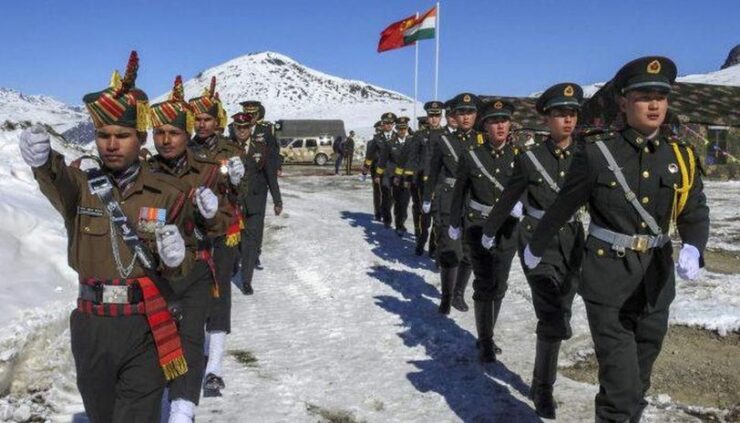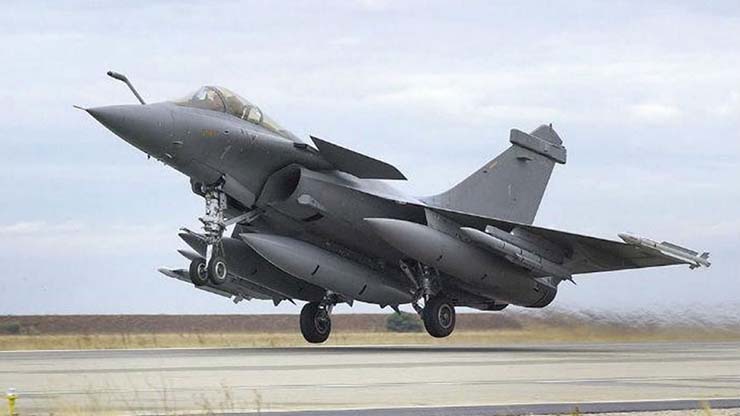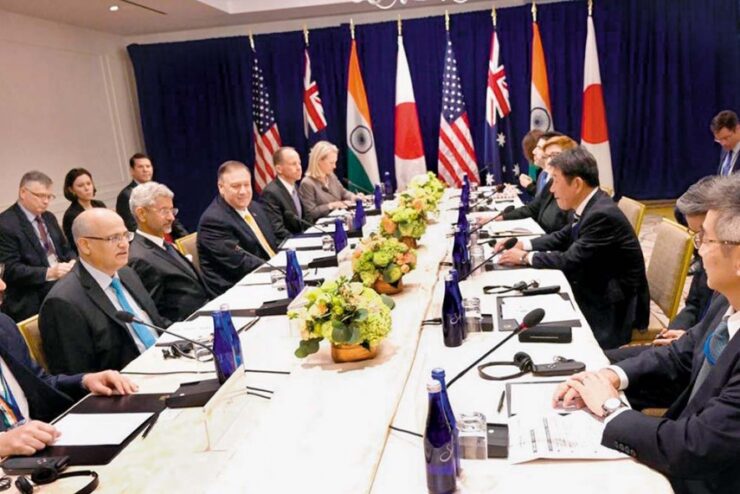
As the two nations India and China dig their heels on restoration of status quo, the clarion call by President Xi Jinping to China’s military to be ready for war ‘at any second’ is a marked departure from the past dictum of “manage crises and deter war.” In fact in his first order of the year to the country’s armed forces, the Chinese President stressed the need for “full-time combat readiness” and said the People’s Liberation Army must use “frontline frictions to polish troop capabilities,” “substantially increase the use of technology and integration of new equipment, new forces and new combat realms into its combat systems.” It is indeed an obvious reference to its intended course of action against a defiant India who has chosen to stand up against the dragon. On India’s part the combat equilibrium may appear skewed but in reality the military capability with a judicious reorientation and realignment of resources is equally balanced to give a befitting response.
The general perceived notion has been to view India’s military capability as a legacy of the post independent era wherein India’s military focus has been Pakistan-centric. The fall out of three successive military engagements gave rise to the cold start strategy which aims to neutralise Pakistan’s military potential in a short swift engagement across multiple geographic frontage necessitating application of force levels to reach a favourable culmination point. Strike Corps were structurally designed to execute this operational function to achieve punitive deterrence. On the other hand the threat from China was relatively underplayed to the extent of achieving credible deterrence sufficient to safeguard own territorial interests. However repeated border insurrection have tested India’s patience for long and has now necessitated a decisive response.
The raising of a Mountain Strike Corps (MSC) which was envisaged a decade ago is a gradual shift in the strategic landscape vis a vis China to achieve a credible deterrence capability. While the blueprint was conceived in 2013, the border standoff is now echoing the requirement of a second MSC thereby giving a balanced strike capability across two varied terrain viz, the line of actual control in Ladakh and the McMohan line in the east. This leaves the central sector to be addressed with the creation of an integrated battle group capable of deterring any offensive along the limited avenues of ingress. That apart what is critical is to enhance the offensive fighting capability required for a befitting riposte or a counter offensive to any Chinese misdemeanour.
Therefore it will now necessitate reorientation of the existing four strike corps to have two facing either front. In addition, the restructuring of the strike corps assigned to the northern borders must cater for multi domain operation with optimum ISR, long range targeting platforms, high mobility transportation means, early warning, air defence and dynamic logistic support capabilities of operating in super high altitude terrain on a sustained basis. It must be clearly understood that operations in super high altitude areas are ultimate test of human endurance, unique and vastly different from any conventional template in the world.

In this context what is of importance is to be aware that the Indian military does possess the necessary wherewithal to tackle any threat. The perceived asymmetric gap in technologies and the art of war-fighting between the PLA and the Indian military is best addressed by a concept of warfare pivoted on stealth, guided munitions, stand-off ranges, and above all battle network centricity with adequate force levels for consolidation. It is abundantly clear that India does not harbour any territorial ambition but seeks to resolutely protect its territorial integrity and sovereignty against any external aggression besides thwarting any unsolicited territorial ingress. In so doing its design of battle shall be limited in scope yet aggressive so as to merely give a befitting response to a Chinese initiated offensive followed by evictions along our claim lines. In this context the Indian military has, over time developed kinetic and non-kinetic means to cripple Chinese command, control, communication, and intelligence network and systems aimed at disrupting its ODDA (observe–orient–decide–act) loop which is crucial for timely decision-making. This is sought to be done by focussing on cyber, electronic warfare, and missiles (ballistic and cruise) capabilities.
In the case of the Indian Air Force the depleted combat strength in terms of fighter squadrons is being steadily recouped. Induction of Rafale and the proposed induction of Tejas with its improved versions will significantly enhance their reach and strike capability given the mid air refuelling capability as well as airfield advantage. This will allow the Indian Air Force to achieve air parity and selective air superiority in a reasonable time frame. The Navy on the other hand has been vigorously pursuing a proposal for a fleet enhancement in terms of underwater capability to add other submarines in its fleet. This shall give the required maritime edge in the Indian Ocean.
Therefore in the event of a Chinese offensive the Indian reaction would be an instant response with simultaneous actions across domains. A land offensive shall be thwarted by an impregnable defence line followed by a decisive high altitude counter offensive supported by a calibrated air campaign augmented by an impregnable maritime dominance in the IOR. All this shall be enhanced by a system destruction capability employing a host of ballistic missiles in its inventory. This would be simultaneously beefed up by a massive cyber offensive culminating in cyber war involving the whole-of-nation way beyond the designated battlespace. Any action by the PLAs Strategic Support Force comprising cyber, space, electronic and psychological capabilities, and the Rocket Force comprising of all ballistic, cruise and hypersonic missiles will be met with an equal counter response by Indian missile defence force. The aim of Indian response shall be limited to eviction and therefore limited in depth under complete international glare.

It would be a strategy that hinges on the application of the comprehensive national power across multiple strategic domains influencing varied operational spectrum. The operationalisation of the QUAD to enhance its military component is a well thought out foreign policy initiative to check mate China in the Indian Ocean as well the South China Sea. In addition the bilateral military cooperation with the US to share critical intelligence as well as space based counter measures augers well to supplement Indian aggressive efforts. The fact that India is now on a quid pro quo response to China’s belligerency is a transformational initiative for the world in general and the region in particular.
While the actions on ground are demonstrative of the recalibrated national will, it simultaneously calls for a military reorientation and capability realignment amid Chinese border standoff as well as Presidents Xi’s oblique military threat. In so doing the challenges of a modern day conventional war has not been lost sight and therefore equally applicable against the PLA.
–The writer is a former GOC-Indian Army and presently a Strategic Consultant & Principal Advisor. Views expressed are personal and do not necessarily reflect the views of Raksha Anirveda








